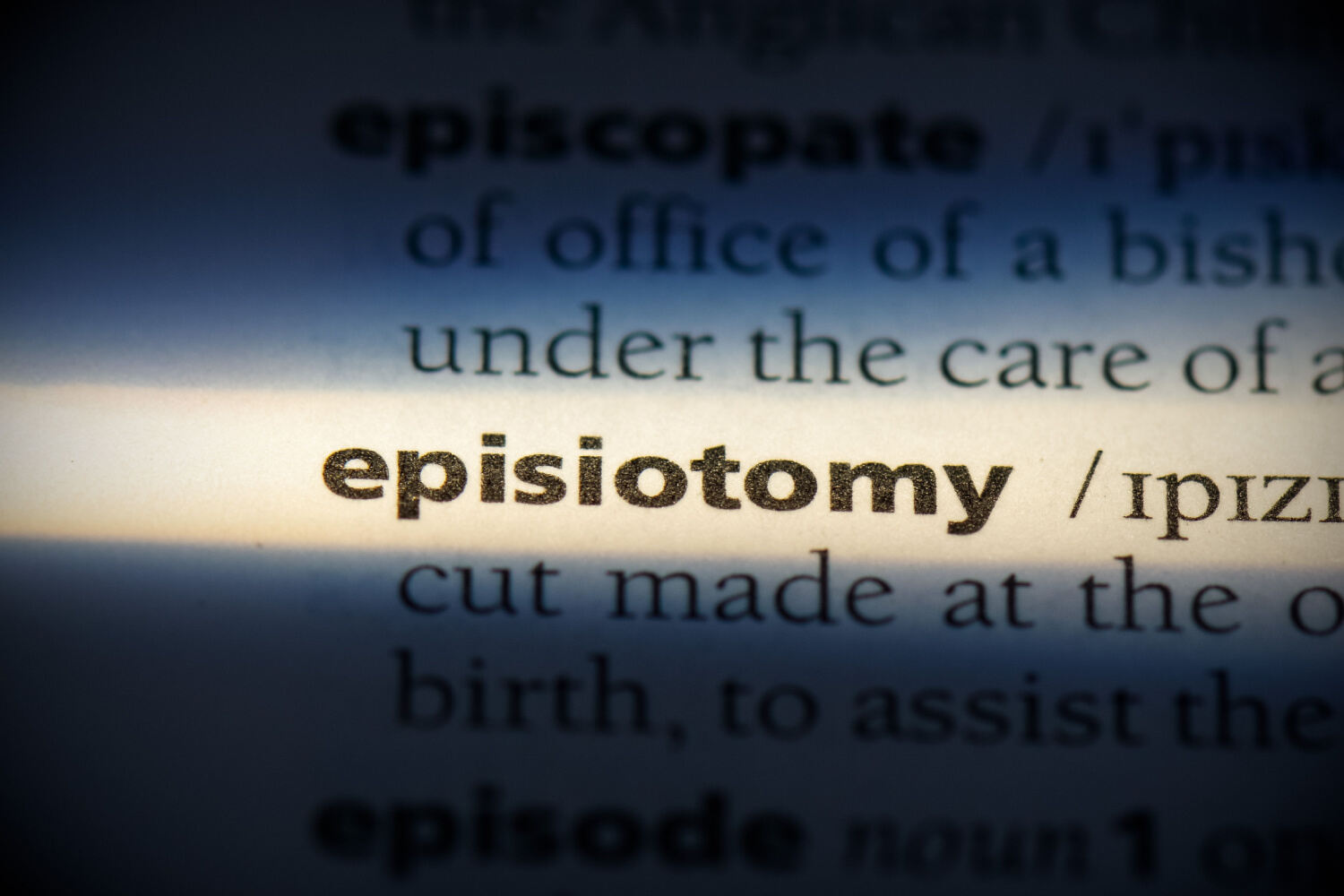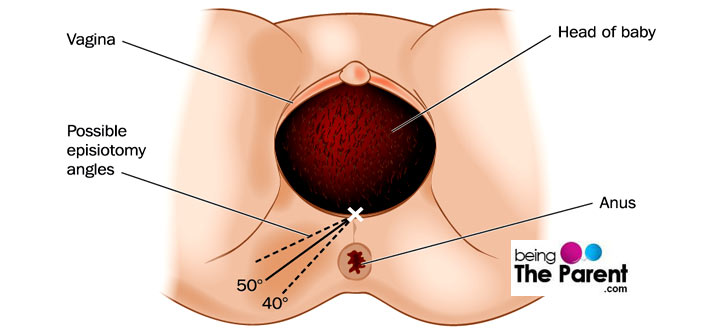
Episiotomy is defined as an incision made surgically in the perineum and the posterior wall of vagina during the third stage of labor to enlarge the vaginal opening for the delivery of head of the baby. It is also referred as ‘birth canal widening’ process to facilitate the delivery of baby. Perineum is the tissue present between the anus and the vagina. It is this region that is surgically cut during childbirth.
- When Is An Episiotomy Performed?
- How Is An Episiotomy Done?
- What Are The Types Of Episiotomy?
- Complications Of An Episiotomy
- Are There Any Advantages of Episiotomy?
- Recovering From Episiotomy
- After Care Of Episiotomy Stitches
- Serious Conditions Of Episiotomy
- Episiotomy Infections
When Is An Episiotomy Performed?
Although a regular process earlier, episiotomy is now only done if:
- The baby appears in distress and needs to be delivered quickly
- The baby is in an abnormal position
- There is a likelihood of having external vaginal tearing during childbirth
- If the perineal muscles are quite rigid
- The fetus is very large
- A woman is in a prolonged labor
- If there is indication of instrumental delivery
- If there is any probability of vaginal lacerations
- The baby’s shoulders are stuck, so as to allow the operator to free them
- To hasten the process of vaginal childbirth
- There is a serious risk to the mother of second- or third-degree tearing
How Is An Episiotomy Done?
Episiotomy is performed by making a small, surgical cut in your perineum just before the birth of the baby. If your epidural is still working, you will not feel anything, but if you do feel, you will be given a dose of a local anesthesia to numb the area. Another shot of an anesthesia is administered when stitching is done.
What Are The Types Of Episiotomy?
There are basically four types of episiotomy namely:
- Lateral: In this type the surgical incision is made around 1 cm away from the middle fourchette (thin fold of skin at the back of the vulva) extending laterally. In this type the chances of hurting Bartholin’s duct is maximum and is therefore it is discouraged.
- Median: In this type of episiotomy, the incision is made from the middle of fourchette extending to the posterior side.
- Medio-lateral: Here the incision extends from the middle of fourchette extending downward and outward either left or right.
- J-shaped: In this type the surgical incision is made from the midline of fourchette extending posteriorly.
Complications Of An Episiotomy
Since episiotomy is a surgical procedure, complications might occur. Some of the probable complications associated with it are:
- Bleeding and/or Infection
- Tearing of the rectal tissue or the anal sphincter
- Perineal pain
- Perineal hematoma (it is the collection of blood in the tissues of perineum)
- Dyspareunia or pain during intercourse
- Sometimes pain persists even after the healing of incision area
Are There Any Advantages of Episiotomy?
Though episiotomy is associated with some amount of discomfort and pain, but it has quite some advantages such as:
- It simplifies the process of delivery
- Less amount of pushing force is needed on the part of the mother for delivering the baby.
- It helps and hastens the delivery of baby in emergency conditions
- Results in less trauma of vaginal tissue is involved
- Unplanned tear can take long to heal while episiotomy is a planned surgical incision and takes less time to recover.

Owing to these factors, episiotomy was performed as a routine. However, later research showed that episiotomy incisions make the recovery uncomfortable, and are sometimes more severe than natural tears. Cases of pain during sex even after months of episiotomy were also observed. Extensive cuts can also result in fetal incontinence and hence it was dropped as a practice and done only if the doctor felt it necessary for easing the childbirth.
Discuss your health and the risk involved in episiotomy with your doctor. A healthy chat about your concerns and wishes for episiotomy will ensure that you go with an open mind into the labor room.
Recovering From Episiotomy
Since episiotomy is a surgical cut, and is stitched by your obstetrician, it will take some time to heal. Usually the stitches dissolve on their own, though you will be feeling a sensation of sharp pain, especially when you walk or sit up. Healing will gradually begin and each passing day will provide you some degree of relief. It will be a month before the stitches get dissolved though the first 10 days are somewhat uncomfortable. Painkillers will be prescribed by your doctor, so you can be assured that they are safe to take.
After Care Of Episiotomy Stitches
After the incision is sutured, you might feel the incision pain. Here are some easy to do remedies to ease the pain associated with episiotomy:
- Apply an ice pack to relieve the pain. It will also help in reducing swelling around the incision
- Sitz bath is also beneficial in reducing soreness and swelling
- Medicated local anesthetic creams or lotions can be helpful but use them only after doctor’s recommendation
- When you use the toilet, pour warm water on your vagina. This will provide relief from stinging or burning sensation as you urinate
- If the pain is not relieved, the doctor might advice you some oral pain killers
- Personal hygiene and toilet hygiene are very important factors influencing speedy healing
- Use cushions inflated with water, air or made of foam for making your sitting easy and painless
- Clean the incision area with lukewarm water and plain non-scented medicated soap whenever you use bathroom
- It is very important to expose the affected region to air for at least 15 minutes to expedite the process of healing
- Keep the incision area dry after urination or defecation to avoid the invasion of infection
- Witch hazel can be used on the affected area to reduce soreness of the incision area
- Use stool softeners to avoid constipation as this will exert pressure on your tender stitches and can cause them to tear apart
- Do not douche, say no to tampons
- Avoid having intercourse till the wound has been completely healed
- Avoid lifting heavy objects or do strenuous work
Serious Conditions Of Episiotomy
If you notice following conditions, immediately consult your care provider:
- Any bleeding from the incision
- Discharge oozing from the vagina
- Foul discharge oozing from the episiotomy site
- Presence of fever or chills
- Presence of severe pain around perineum
Episiotomy Infections
While your body is recovering and recuperating, it is vulnerable to many infections. The common and frequent being endometritis (infection of the innermost lining of uterus). Besides this other common infections are
- Breast infection such as mastitis
- Urinary tract infection
- Wound infection
If you are concerned that the healing is not happening properly, be sure to discuss the same with your obstetrician the next time you visit her. Also notice for signs of pus, severe pain, fever or any other sensation that does not feel fine.
